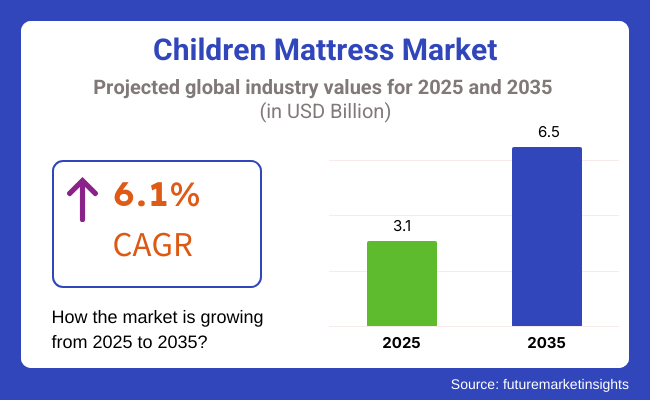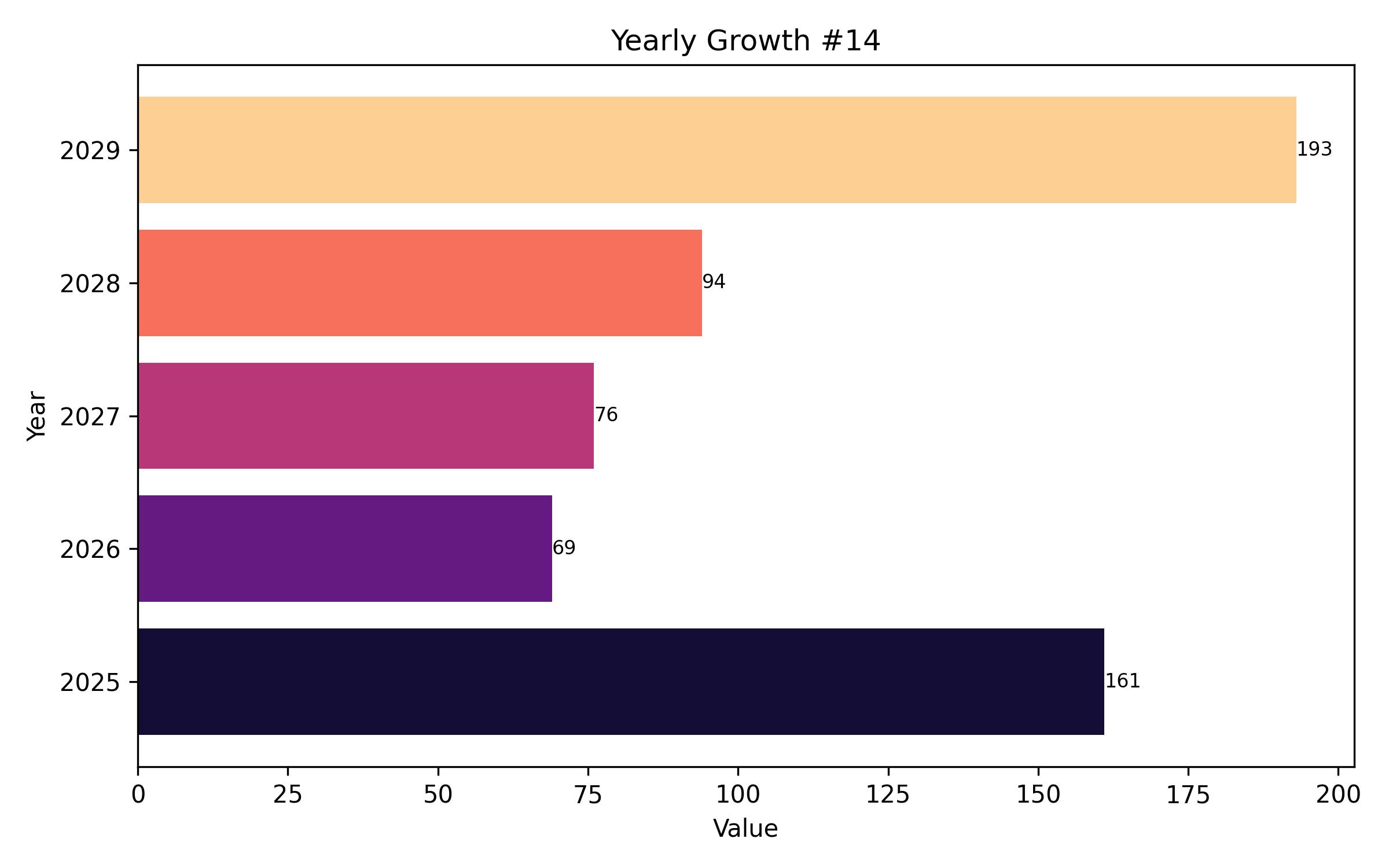Children’s Mattress Market Dynamics by Product Type, Material, Sales Channel, and geography – Insights & Ten-Year Forecast 2025-2035
Overview:
The global children’s mattress market is set for substantial growth between 2025 and 2035, propelled by increased parental focus on sleep health and comfort, along with technological advances in materials. Growing demand for natural, hypoallergenic, and sustainable sleep solutions is a key driver. The sector is projected to increase from a value of USD 3.1 billion in 2025 to USD 6.5 billion by 2035, indicating a compound annual growth rate (CAGR) of 6.1% over the decade.
Heightened awareness concerning the importance of restful and healthy sleep for children’s development is fueling interest in this specialized market segment. Parents actively seek mattresses offering safety, comfort, and durability, prioritizing features that provide adequate spinal support and are made from non-toxic substances.
A significant growth factor is the expanding availability and preference for mattresses made from organic, hypoallergenic, and environmentally friendly materials. These characteristics align with growing consumer interest in healthier and more sustainable living environments.
Innovations in mattress construction are also notable. Newer models designed with enhanced breathability, temperature regulation capabilities, and pressure-relief features are attracting attention from parents focused on optimal sleep environments. The increasing acceptance of various types such as memory foam, latex, and hybrid constructions further contributes to market expansion.
Customizable and themed mattresses tailored for children represent a growing trend influencing market dynamics. Manufacturers are beginning to incorporate technology like sleep tracking and posture support into smart mattress designs. Creative marketing, including using popular characters and durable material options like PVC-free covers, helps build loyalty.
The drive towards using advanced, environmentally conscious manufacturing processes results in mattresses that are not only safer and non-toxic but also more durable. The avoidance of harmful chemicals such as flame retardants and phthalates addresses parental concerns regarding indoor air quality and overall product safety.
However, challenges persist. The high cost associated with premium children’s mattresses and competition from more traditional, lower-priced alternatives can impact purchase decisions. Parental concerns about product longevity and the need for replacement cycles also play a role in value assessment.

Despite these challenges, significant opportunities exist within specialized market niches. The demand for ergonomic and orthopedic mattresses addressing diverse sleep requirements presents avenues for innovation. The growth of direct-to-consumer and online retail channels further increases product accessibility and affordability, broadening the reach of specialized and advanced mattress offerings.

| Report Attribute | Details |
|---|---|
| Market Size in 2025 | USD 3.1 billion |
| Revenue Forecast for 2035 | USD 6.5 billion |
| Growth Rate (CAGR) | 6.1% from 2025 to 2035 |
| Base Year for Estimation | 2024 |
| Historical Data | 2019 – 2023 |
| Forecast Period | 2025 – 2035 |
| Quantitative Units | Revenue in USD million/billion and CAGR from 2025 to 2035 |
| Report Coverage | Revenue forecast, company market share, competitive landscape, growth factors, and trends |
| Covered Segments | Type, material, distribution channel, and region |
| Regional Scope | North America, Europe, Asia Pacific, Latin America, MEA |
| Country Scope | U.S., Canada, Mexico, U.K., Germany, France, Italy, South Korea, Japan, China, Australia, New Zealand |
| Key Companies Analyzed | Tempur Sealy, Serta Simmons Bedding, Naturepedic, IKEA, Zinus, Avocado, Purple, Saatva, Linenspa |
| Customization Options | Free report customization (up to 8 analysts working days) with purchase. Changes to country, regional, and segment scope |
| Pricing and Purchase Options | Customizable purchase options for tailored research needs |

Report Coverage & Deliverables
- Market Trends And Dynamics
- Competitve Benchmarking
- Historical data and forecasts
- Value/Volume analysis
- Company revenue shares and key strategies
- Regional opportunities
This is an indicative segmentation. Please request a sample report to see detail segmentation of this market.
Detailed Market Segmentation
- By Type
- Foam
- Toddler
- Crib
- Twin
- Others
- By Material
- Cotton
- Memory Foam
- Latex
- Innerspring
- Hybrid
- By Sales Channel
- Online Retail
- Specialty Stores
- Department Stores
- Other Channels
- By Region
- North America
- Europe
- Asia Pacific
- Latin America
- Middle East & Africa
Table of Content
- Executive Summary
- Market Overview
- Key Market Trends
- Value Chain Analysis
- Market Demand Analysis 2020 to 2024 and Forecast, 2025 to 2035
- Market Background
- Risk Assessment
- Porter’s Five Forces Analysis
- Global Children Mattress Market Analysis 2020 to 2024 and Forecast 2025 to 2035, By Type
- Global Children Mattress Market Analysis 2020 to 2024 and Forecast 2025 to 2035, By Material
- Global Children Mattress Market Analysis 2020 to 2024 and Forecast 2025 to 2035, By Sales Channel
- Global Children Mattress Market Analysis 2020 to 2024 and Forecast 2025 to 2035, By Region
- North America Market Analysis 2020 to 2024 and Forecast 2025 to 2035
- Europe Market Analysis 2020 to 2024 and Forecast 2025 to 2035
- Asia Pacific Market Analysis 2020 to 2024 and Forecast 2025 to 2035
- Latin America Market Analysis 2020 to 2024 and Forecast 2025 to 2035
- Middle East & Africa Market Analysis 2020 to 2024 and Forecast 2025 to 2035
- Country-Wise Market Analysis
- Market Structure Analysis
- Competition Analysis
- Key Players
- Research Methodology
